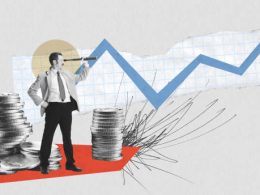In the world of forex trading, two primary methods dominate the decision-making process: technical analysis and fundamental analysis. Each approach offers unique insights into the market, but traders often find themselves debating which method is superior. In this article, we will delve into the principles, advantages, and limitations of both technical and fundamental analysis to determine which holds the edge in the dynamic landscape of forex trading.
Technical Analysis: Unveiling Market Patterns

Technical analysis revolves around the study of historical price movements and trading volumes to forecast future price trends. It relies on charts and technical indicators to identify patterns and trends in market data. Traders using technical analysis believe that all relevant information about an asset is already reflected in its price and volume data. By analyzing these patterns, they aim to predict future price movements and make informed trading decisions.
Advantages of Technical Analysis
- Clear and Objective: Technical analysis provides traders with clear, objective criteria for making trading decisions. Charts and indicators offer concrete data points, reducing ambiguity in the decision-making process.
- Short-Term Focus: Technical analysis is particularly useful for short-term traders who aim to capitalize on short-term price movements. By identifying short-term trends and patterns, traders can enter and exit positions quickly, maximizing profits.
- Adaptability: Technical analysis can be applied to any financial market, including forex, stocks, and commodities. Its principles remain consistent across different assets, allowing traders to adapt their strategies to various markets.
Limitations of Technical Analysis
- Limited Information: Technical analysis solely focuses on price and volume data, overlooking broader economic factors that may influence market movements. Traders relying solely on technical analysis may miss crucial fundamental developments that could impact their trades.
- Subject to Interpretation: Interpretation of charts and indicators can vary among traders, leading to conflicting analyses and trading decisions. This subjectivity introduces an element of uncertainty into technical analysis.
- Inability to Predict Major Events: Technical analysis struggles to predict major market-moving events, such as geopolitical tensions or economic policy changes. While technical indicators may provide insights into market sentiment, they often fail to anticipate significant shifts in fundamentals.
Fundamental Analysis: Understanding Market Drivers
Fundamental analysis focuses on evaluating the intrinsic value of an asset by examining economic, financial, and geopolitical factors that may influence its price. Forex traders using fundamental analysis analyze macroeconomic indicators, central bank policies, geopolitical events, and market sentiment to gauge the strength of a currency and predict its future direction.
Advantages of Fundamental Analysis
- Comprehensive Analysis: Fundamental analysis offers a holistic view of the market by considering a wide range of factors that may impact currency prices. By examining economic indicators, geopolitical developments, and central bank policies, traders gain a deeper understanding of the underlying forces driving the market.
- Long-Term Perspective: Fundamental analysis is well-suited for long-term traders who focus on the broader trends and economic fundamentals shaping currency valuations. By identifying undervalued or overvalued currencies, traders can make informed long-term investment decisions.
- Anticipation of Major Events: Fundamental analysis enables traders to anticipate major market-moving events by monitoring economic calendars, central bank announcements, and geopolitical developments. By staying ahead of these events, traders can position themselves strategically to capitalize on emerging trends.
Limitations of Fundamental Analysis
- Time-Consuming: Conducting thorough fundamental analysis requires extensive research and analysis of economic data, central bank policies, and geopolitical events. This process can be time-consuming, especially for traders with limited resources or expertise.
- Uncertainty in Interpretation: Fundamental analysis involves interpreting economic data and assessing its impact on currency prices. However, different analysts may interpret the same data differently, leading to conflicting views and trading decisions.
- Market Noise: Fundamental analysis may be overshadowed by short-term market noise and speculative trading, particularly in the forex market. Traders may find it challenging to filter out irrelevant information and focus on the key fundamentals driving currency prices.
Comparative Analysis: Technical vs. Fundamental Analysis
To better understand the strengths and weaknesses of technical and fundamental analysis, let’s compare them across several key criteria:
| Criteria | Technical Analysis | Fundamental Analysis |
|---|---|---|
| Focus | Historical price movements and trading volumes | Economic, financial, and geopolitical factors |
| Time Horizon | Short-term | Long-term |
| Predictive Ability | Short-term price trends and patterns | Major market-moving events and long-term trends |
| Data Requirements | Price and volume data | Economic indicators, central bank policies, geopolitical events |
| Interpretation | Objective criteria based on charts and indicators | Subjective interpretation of economic data and events |
| Adaptability | Applicable to any financial market | Focus primarily on forex market |
| Informational Depth | Limited to price and volume data | Comprehensive analysis of economic and geopolitical factors |
Conclusion
The debate between technical and fundamental analysis in forex trading has long been a subject of contention among traders. Both methodologies offer unique insights into market behavior and present distinct advantages and limitations.
Technical analysis, with its focus on historical price movements and trading volumes, provides traders with clear, objective criteria for short-term trading decisions. It is particularly suitable for traders seeking to capitalize on short-term price trends and patterns, offering adaptability across various financial markets.
On the other hand, fundamental analysis offers a holistic view of the market by considering economic, financial, and geopolitical factors that may influence currency prices. While it requires a more extensive analysis of economic indicators and central bank policies, fundamental analysis enables traders to anticipate major market-moving events and identify long-term trends.
Ultimately, the choice between technical and fundamental analysis depends on individual trading preferences, time horizons, and risk tolerance. Some traders may opt to combine elements of both approaches to gain a more comprehensive understanding of the market and improve their trading performance.












